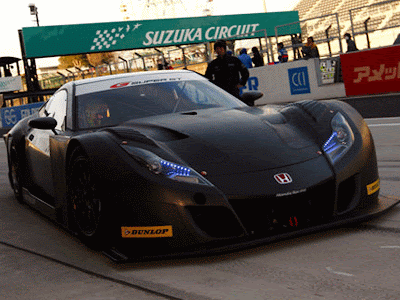 For a start, the engine was developed in partnership with Yamaha. Nothing new there, as Toyota/Yamaha partnerships go back to the Toyota 2000GT of the late 1960s. The Yamaha engineers involved were last associated with the company's most recent Formula One engine effort, so they were well-versed in high-performance engine design and development. The block is die cast aluminum, with a forged steel crankshaft featuring mirror-polished journals for minimum friction. Connecting rods and pistons are designed and built for strength and durability in high-rpm operation.
For a start, the engine was developed in partnership with Yamaha. Nothing new there, as Toyota/Yamaha partnerships go back to the Toyota 2000GT of the late 1960s. The Yamaha engineers involved were last associated with the company's most recent Formula One engine effort, so they were well-versed in high-performance engine design and development. The block is die cast aluminum, with a forged steel crankshaft featuring mirror-polished journals for minimum friction. Connecting rods and pistons are designed and built for strength and durability in high-rpm operation.The Yamaha-designed cylinder heads have a lightweight four valve per cylinder valvetrain with titanium intake valves, a dual-intake induction system that opens a secondary intake above 3600 rpm for more power, the SFI D-4 direct and port fuel injection system (similar to that used in other IS models) that allows a high 11.8:1 compression ratio for increased power and efficiency, and a new twist on the VVT-i variable cam phasing system. VVT-iE still uses conventional hydraulic control to "degree" exhaust camshafts - rotate the shaft relative to its static position to advance or retard valve timing and change valve overlap. Because this uses engine oil, which needs to be warmed to operating temperature and viscosity for the system to work, it doesn't operate when the engine is cold. To get by this problem, the intake camshafts are degreed by computer-controlled electric motors. The result is improved running from cold, increased power - and increased fuel efficiency and decreased emissions. Unlike some competitors, the IS-F will not come with a "gas guzzler" surcharge. Maximum power, all 416 horses worth, is developed at 6600 rpm, with maximum torque 371 lb-ft at 5200. Redline is 6800. And EPA mileage is 16 city, 23 highway.
If the engine is interesting, the transmission is even more so. Manual shifting is a necessity in a high-performance automobile, and high-tech high-performance these days means an automated manual gearbox, with lightning-fast up- and down-shifts controlled, along with the clutch, by electronic and hydraulic wizardry. Such gearboxes are found in all major road-racing series, and in many of the IS-F's competitors. They are not torque-converter automatics with manual shifting. Audi's twin-clutch DSG is the benchmark. Lexus challenges it with an eight-speed gearbox with a twist - it's both a torque-converter automatic in automatic mode, and fully manual in manual mode in gears two through eight. First uses the torque converter to deal with the stresses of starting, but it's locked up otherwise in manual, to provide a direct connection between the engine and transmission. Upshifts can take as little as one tenth of a second, with downshifts taking two-tenths. Engine and transmission revs are automatically matched during downshifting.
© Source: theautochannel
We need your comments below >>













No comments:
Post a Comment